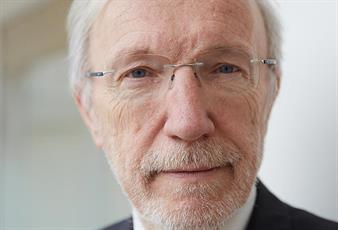Paul Holmes 24 Jun 2019 // 6:45AM GMT

CANNES — Of all the ways agencies are transforming themselves to compete in an era of convergence — adding new digital capabilities and more integrated solutions — the one thing clients really care about is the ability to provide better strategic advice on the major business challenges confronting companies in a complex environment.
That is true, at least, for the clients participating in a roundtable moderated by the Holmes Report, in partnership with WE Communications. When asked what she was looking for in an agency, Aflac’s chief ESG and communications officer Catherine Blades was succinct: “I am looking for someone who can help me solve my problems in a way that is meaningful to all of my stakeholders.”
Damon Jones, VP for global communications & advocacy at Procter & Gamble, expanded on the same theme: “My advice to agencies, is fall in love with the problems of your client at the highest level. If I think we’re thinking about the same things when we’re trying to get to sleep at night, we will have a very different relationship and very different conversations.
“The challenges I am facing are business challenges, and so I need people who really understand business strategy. There are a lot of people in our profession who don’t fundamentally understand business. But more and more we need that business standpoint first and foremost to define the problem we are trying to solve.”
The good news is that Blades, in particular, felt as though her agencies were delivering on the strategy front. “We have two categories of agencies,” she said. “We have the Deloittes and Accentures and those guys and we have our communications agencies. Our communications agencies are much more ahead of the curve in terms of anticipating our needs. I need people to solve problems. So for me I need people who can help me solve problems and not just give me a long list of things I can’t implement because I am under-resourced and then walk out the door.”
Kimberly West, director of external communications at Mars, touched on a similar need: “Push us. Push us to compete with ourselves, to be better, and embrace our anxiety—the need to be known and relevant and to find that intersection between what we want to say and what the world cares about. I need our team to have the same anxiety we do, about the world is flooded with content, and why should anybody care what we have to say?”
And for Jones, part of being a strategic counselor is the ability to acknowledge that one firm can’t do everything. “You have to be willing to raise your hand and say ‘that’s not my expertise. I love it when people say, ‘I am not an expert in this but I know somebody who is.’
“Not everything we need exists under a single roof. Two weeks ago I needed a video produced, and the agency wanted to do its research and tap its own network, and I knew a freelancer in LA — and the best and fastest solution was to can combine your agency’s strategy with his production capability. The agency doesn’t have to own every step in the process.”
Emphasizing that “it’s not about an integrated delivery system,” Jones explained how his needs have changed in recent years. “Briefs that I wrote as a junior manager were all about generating brand awareness. But if all you are doing is getting me reach there are so many cheaper, better ways today to do that. What I need is counselors who can help me with my blindspots. I want people who can help me understand the context.”
Kass Sells, president of international at WE, observed that holding company agencies, in particular, faced pressure to “sell in as many services from the holding company as possible. From our side, we are in more conversations where the client comes to us and an ad agency and a digital agency and explains the business challenge and they don’t care where the strategic idea or the insight comes from.”
In response, Jones agreed, but added: “What is frustrating is when the conversation on roles happens before the conversation on strategy. Give me the idea, and then we can talk about who is in which swim lane. I think people get it. If people are too focused on competing with other agencies they are really going to miss out.”
Added Blades, “The first one who doesn’t play nice in the sandbox is the first one thrown out.”
Having recently been tasked with taking the lead on creating Aflac’s environmental, social and governance content, she has discovered how difficult it is to find one agency that can do it all. “Lots of people claim to do that,” she said. “Well, they might do E or S or G but very few of them do everything. We use a lot of different agencies, and each of them are good at one or two things.”
West is facing a similar challenge. “Our agencies have a challenge in that we are transforming ourselves, from an organization that was comfortable flying below the radar to one that has articulated a purpose and taken a strong position on climate change, for example. I want to be pushed.
“We are finding that having a variety of agencies work together gives us the best range of solutions and different point of views.”
Again, the emphasis was less about specific capabilities and more about strategic thinking: “I think the way content exists now means that there are no swim laves, it comes down to whether a story is good. It can come from social, or from paid, or from traditional media coverage. But it comes down to which agency can crystallize the story and help you communicate to all your stakeholders.”
Asked for advice for agencies in the midst of transformation, Jones had some excellent tips: “One of our struggles is that people transform to an end point, and everyone skates to where the puck is and by the time they get there the puck has moved again. There has to be inherent flexibility built in. We need transformation to a more agile, flexible mode. It’s less about the transforming the agency model and more about being comfortable with constant change.”


































.jpg)

















